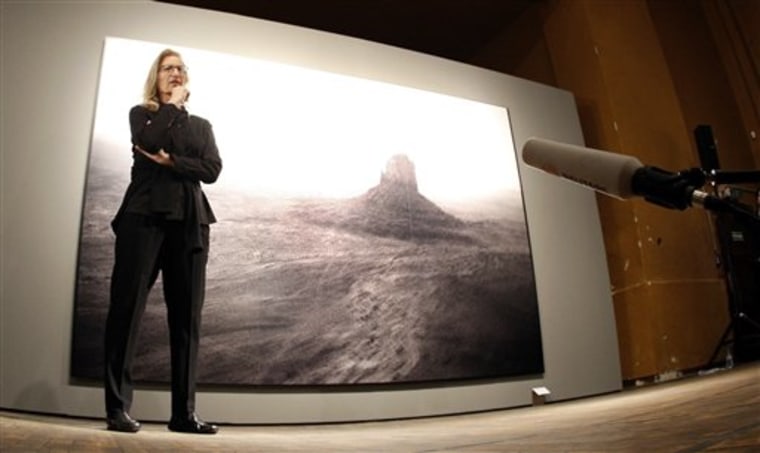With stock portfolios plummeting and the economy tanking, owners of expensive art are increasingly using their collections as collateral to obtain a much-needed infusion of cash.
Works by Pablo Picasso, Henri Matisse, Willem de Kooning, Andy Warhol are among the pieces collectors have leveraged in recent months. The Metropolitan Opera put up two famed Marc Chagall murals in its lobby as collateral, and renowned photographer Annie Leibovitz recently borrowed $15 million against her entire collection of images.
A New York company that issues loans against fine and decorative arts and real estate says it has seen a 40 to 50 percent increase in business over the last six months. Leibovitz obtained her loan from the firm, Art Capital. Other celebrities who reportedly have secured funds with their own works include film director Julian Schnabel.
Art Capital co-owner Ian Peck said the firm has "taken in important modern masters, important old masters and very important decorative arts," among other valuable pieces. The firm said it expects to make about $120 million in loans in 2009, up from $80 million last year.
Art collections can be lifesavers for people looking for extra cash. The art works are appraised and treated as collateral just like a car or home would be. Art brokers say that people offering up their collections are doing it for a number of reasons, including dealing with financial issues, raising money for businesses or buying more art. Some of the cash-strapped art owners have been burned by Ponzi schemes, Peck said.
Art Capital and Art Finance Partners, another New York lending firm, have also started to hear from small museums and other institutions whose endowments have been deeply cut by a severe drop in private donations.
"With the stock market down 40 to 50 percent, people's liquidity is really drying up," said Andrew Rose of Art Finance. "If you're unfortunate to have a lot of stock at Citibank or Lehman Brothers you may have been wiped out substantially."
Art owners are turning to established banks, too. Citigroup and Bank of America, two of a very small number of large banks involved in art lending, have seen a huge growth in the past several months in the number of clients putting art up as collateral. The banking crisis has not had any significant effect on their art lending.
Bank of America's U.S. Trust saw a 50 percent increase in clients who leveraged their art between the first quarter of 2008 and the same period this year, said art lending head John Arena.
Citigroup's Citi Private Bank employs a group of eight art professionals who advise wealthy collectors on everything from building, appraising and managing their art to securing loans.
"We are working with clients who are using art as collateral with the aim of getting liquidity from the loans to invest in other investments and other assets or to increase their art holdings," said Citi art adviser Suzanne Gyorgy.
Both banks look for high-end works of art and try to assemble a diverse portfolio. Arena said they have taken on works from Picasso, Matisse and Monet, among others.
"We look for museum quality works, very high-end pieces, and we do the values in house so it's confidential for the client," said Gyorgy. "We look for a diversified group of artists to reduce our risk by not concentrating on any one artist or area."
While auction houses also offer loans on art works, those works ultimately wind up at auction. Christie's currently is lending funds to sellers in upcoming sales but not to buyers.
New York is not the only place where wealthy individuals are pawning off possession amid the financial meltdown. In the wake of the Bernard Madoff scandal, people who saw their life savings decimated turned to a pawn broker in Palm Beach to raise cash, offering up everything from sports cars to gold jewelry.
The banks and the art-lending firms operate in different ways. The banks treat the art works as collateral and only take possession if the owner defaults on the loan, something that rarely happens.
Art Capital issues loans at interest rates ranging from 6 to 16 percent and in most cases takes possession of the art, similar to how a pawn broker would claim an item, keeping the pieces in secured storage vaults until the loan is repaid.
"We're looking at very large deals now, $40 million to $60 million each," Peck said. "The trend is toward larger deals with more assets in them."
